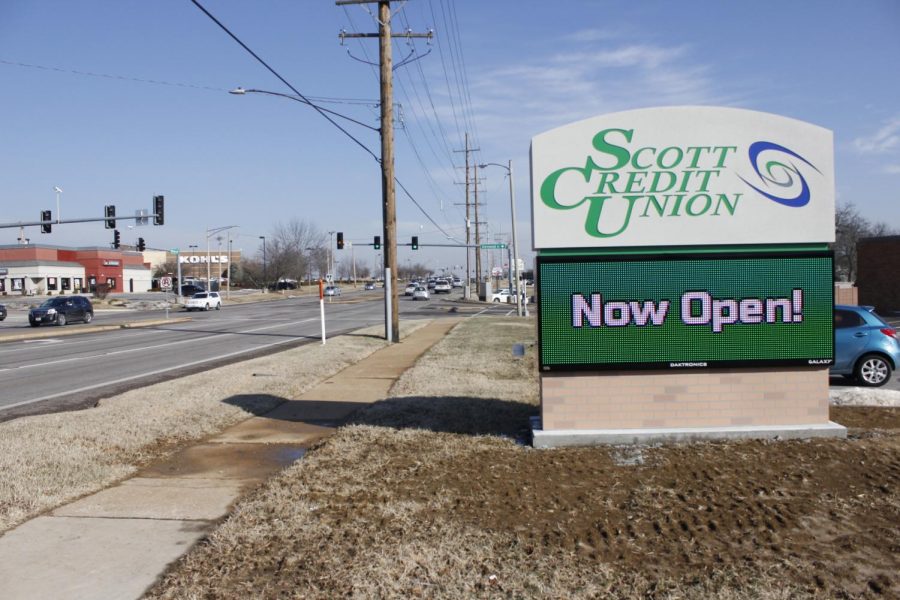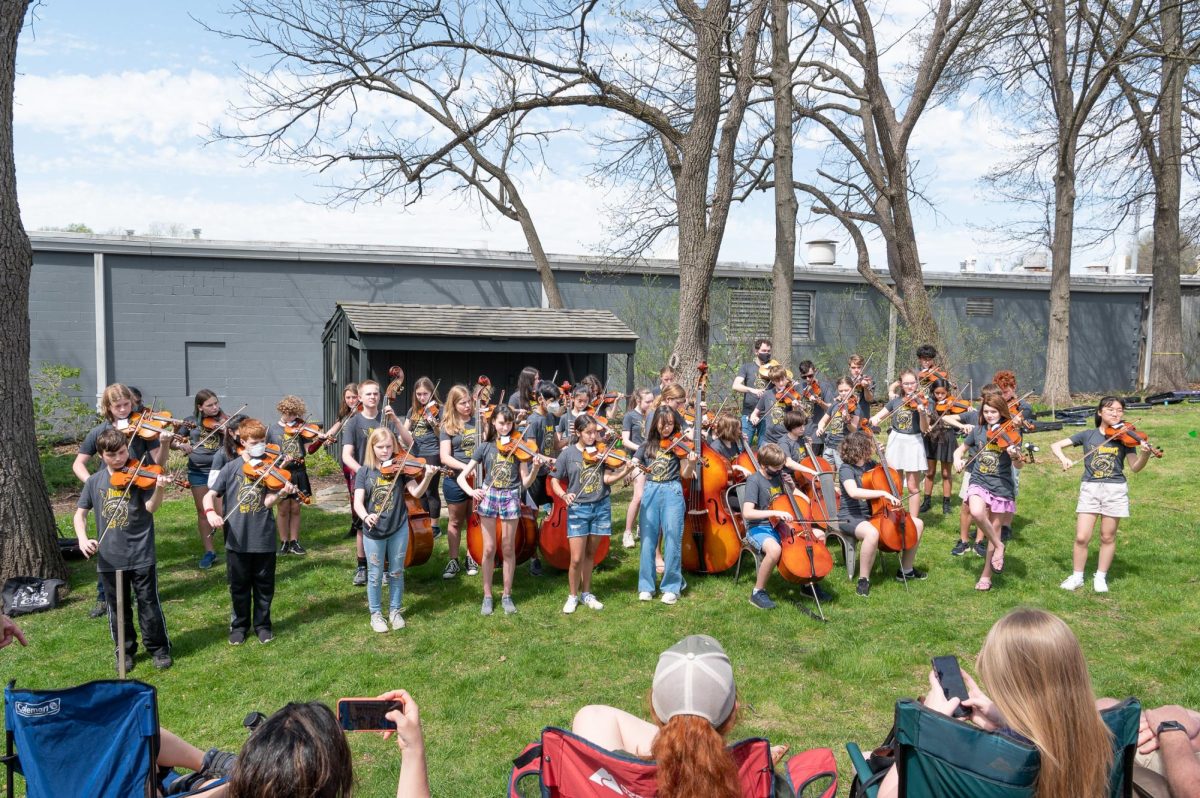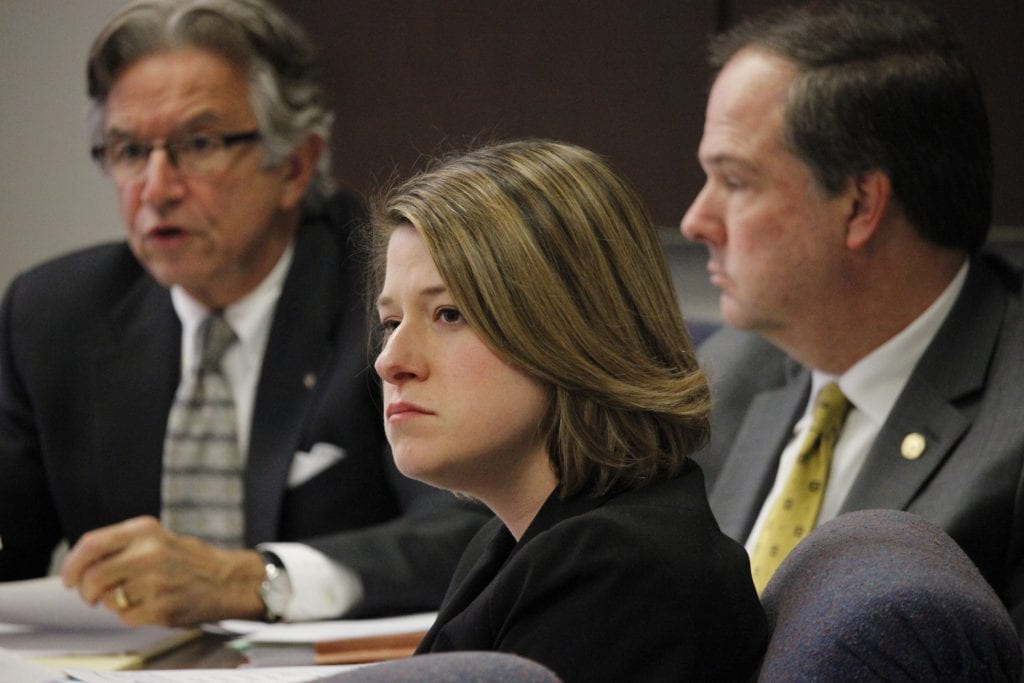After nearly half a decade of review and revisions, the city of Crestwood has a new sign code in effect for this election season after it was approved by the Board of Aldermen in January.
The process began in the wake of a 2015 United States Supreme Court ruling in the Arizona case Reed v. Town of Gilbert, which clarified when municipalities may restrict sign content. In a 9-0 opinion, justices ruled that many municipal sign codes unconstitutionally distinguished between certain types of speech, and that sign codes need to be revised to make sure restrictions are not based on content or message.
At the time of the 2015 ruling, Crestwood’s sign code distinguished between political yard signs and commercial signs, which was deemed unconstitutional by the Supreme Court.
The final sign code, approved unanimously at the Jan. 28 Board of Aldermen meeting this year, makes changes to over 20 different kinds of signs.
As part of the revisions to the sign code, Crestwood city staff was directed to draft three new definitions for the terms “main traveled way,” “ground sign” and “monument sign.”
In the adopted code, the main traveled way is defined as the “portion of the roadway designed for the movement of persons, including driving lanes, shoulders, auxiliary lanes, and roadside, picnic, parking rest and observation areas” and other areas adjacent to roadways.
Ground signs are defined as “any sign which has the top part of its base less than 1 feet above the ground” and is built on the ground.
A monument sign is defined as a “low profile” sign with little or no open space between the ground and the sign. The sign base is usually constructed of brick, stucco, stonework or texted concrete that complements the building it fronts.
Other changes to the sign code include limiting the hours of electronic messaging displays to only operate from 6 a.m. to 10 p.m. Neighboring town Kirkwood has similar restrictions on electronic messaging signs, which served as some inspiration.
Language was added to the code for light-standard signs, which are now permitted for residential subdivision signs under the new code.
One repeated concern during discussion on the sign code by the aldermen was that the new code proposal would be too restrictive on electronic reader signs, since they are sometimes used by local churches in residential areas.
The final version of the approved sign code allows for electronic messaging signs in residential areas, as long as signs are turned off by 10 p.m. and not turned on again until 6 a.m. the following day. This is a similar time frame that Kirkwood uses for electronic signs in residential areas.
Electronic messaging signs cannot contain large background areas of bright white or other “high-intensity” color.
The new code also allows restaurants and other businesses to place sandwich board signs or other portable signs outside, as long as they are placed five feet away from the right-of-way line and do not impede pedestrian traffic. Signs can only be placed outside from 10 a.m. to 8 p.m.
With the COVID-19 pandemic, the newly adopted sign code allowed restaurants to advertise if they were offering carryout or delivery services while shut down for indoor dining under St. Louis County’s stay-at-home order last spring. The city’s previous sign code did not allow for sandwich boards.
Yard signs cannot exceed 25 square feet and are limited to one of the same sign per street front, except during election season, when more than one ground sign is permitted. However, two or more identical signs remain prohibited, and signs must be removed after the election season — which is defined as 30 days prior to any election voted in by residents of Crestwood and running to two days after the election.
Prohibited under the revised code are roof signs; banners, pennants or flags, suspended from awnings; signs painted on the inside or outside windows, excluding etched glass; and ropes, streamers, wind operated devices, inflatables, search lights, flashing lights and other types of “fluttering” devices.
The city first attempted to rewrite its sign code in-house through the city’s existing Sign Commission. The commission presented revisions to the board in 2016, but the board didn’t sign on to the changes and sent the code back for more review.
The Sign Commission was dissolved in 2017 in a separate effort by the city to update its code related to advisory boards. The commission’s responsibilities overseeing the sign code were transferred to the Planning and Zoning Commission.
In 2018, the city hired planning firm Peckham Guyton Alberts & Viets, or PGAV, to update the city’s zoning code, with the sign code revision also included in the scope of work for the firm.
PGAV finished drawing up the sign revisions in the first half of 2019, and those changes went to the planning panel for further discussion, including workshops and review by residents and business owners.
A public hearing was held on the revisions by the Board of Aldermen in late November 2019, with the final approval of PGAV’s sign code review unanimously approved by the Board of Aldermen 7-0 in January 2020. Ward 3 Alderman Greg Hall was absent.
Crestwood’s neighboring city Sunset Hills also had to review its sign code during the primary election this spring, which was ultimately postponed until June because of the pandemic.
In that instance, Sunset Hills Mayor Pat Fribis claimed that Sunset Hill’s residential sign ordinance was unconstitutional since it only permits one campaign/individual rights sign per lot and two per corner lot, citing the Reed v. Town of Gilbert case.
Sunset Hills City Attorney Robert E. Jones confirmed that the city’s sign code was unconstitutional, suggesting that the city refrain from enforcing any section of the sign code that is content-based and instead look at the least restrictive sign that is permitted for a particular zoning district.
Like Crestwood, Sunset Hills will update its sign code in the future as part of the unified development ordinance, or zoning code, that the city is still in the process of rewriting with firm Houseal Lavigne.






























